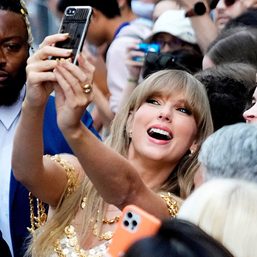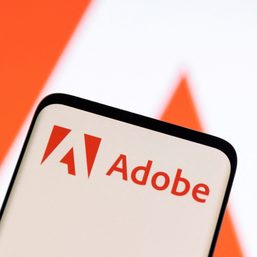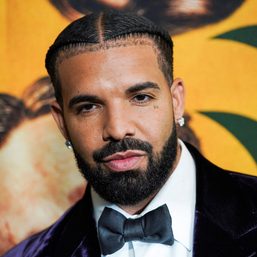SUMMARY
This is AI generated summarization, which may have errors. For context, always refer to the full article.

For Gab, a young artist in Cavite, generative artificial intelligence (AI) catalyzed the end of a friendship.
Disciplined practice and four years of fine arts education have taught him how to transform digital brush strokes into vibrant superhero portraits.
The friend however, discouraged his skills, pointing to the advent of machine-generated artwork in tools such as DALL-E and Midjourney. While the friendship became a casualty in the said disagreement, Gab remains one of the many eager artists honing their crafts while navigating the changing tides of technology.
The young artist may have been right, if some advice from veteran leaders in the animation and commercial visual arts industry are correct.
Speaking at industry event ICON Manila, held on September 27 and 28, Marvel concept artist George Hull asks the audience, “How good do you want to be?”
With the abundance of tools such as pre-made 3D models, Hull believes that artists should retain an understanding of traditional techniques to push their skills further.
ICON Manila is an annual event now on its 10th year hosting talks from veteran artists, which uses its earnings as aid for disadvantaged communities in the Philippines.
The event was also involved in some controversy after Senator Imee Marcos made an appearance as a guest speaker at the event, prompting negative responses on at least one Facebook post about the incident. Event founder and organizer Armand Serrano latern spoke on stage about the incident, saying that moving forward it will not let politics taint its mission to give back to the community.
Serrano, also a visual development artist, art director, and production designer for animation films, spoke from personal experience on the need for fundamentals even as technologies change.
“Any time in history, there’s always development in art,” Serrano told Rappler. “I came from traditional animation. Some people said, ‘Oh, the digital age will take over it. We’re going to be pushing a button, and they’re going to do the animation for us.’ But twenty years later, no one’s still just pushing a button. There has to be a human component.”
Virtual reality, he said, was also one of the major technologies that people cast aside in its early days. Nowadays, he integrates VR in his process of sketching and sculpting.
On stage, Armand harnessed the power of another disruptive innovation, virtual reality, to create brilliant and spatially accurate drawings with ease and speed. In a few minutes, he turned a three-dimensional (3D) rendering of a toilet into a detailed fantasy ship. The audience, a mix of art students and professionals, resounded in oohs and aahs.
When asked about how art and animation studios are adapting to new technological advances, Serrano answered simply: slowly. Exploring new pipelines is a gradual process.
For young artists, Serrano echoes Hull’s advice to master the fundamentals of art. Despite the evolution of artistic tools, it’s the artists’ understanding of perspective, anatomy, light, and colors that gave soul to their works.
“At the very core,” he said, “you still need to learn the rules before you break them.”
He said that artists should tackle technological disruption as if preparing for battle: know your weapons, and don’t accept defeat right off the bat.
At least one group of artists in the US from the nonprofit Creative Commons, who demanded to be heard by US Congress, also highlighted the primacy of the person and their skills as a creator. They said that while generative AI tools are “empowering and expressive,” it is still the human that gives soul to any piece of work.
AI: a tool or threat?
Technological disruptions in art is not unprecedented.
For example, upon seeing a daguerreotype, an old photographic process, in the 1840s, French artist Paul Delaroche proclaimed painting as “dead.”
Photography, however, granted a new perspective to 19th-century artists – enabling realists to experiment with the distortion of a camera’s lens and pushing notable impressionists to represent reality in a more magical, nuanced, and loose fashion.
Widespread technological disruption conquered the art scene once again when art became digital. While traditional artists made washes from water and paint, those who worked digitally primed their canvases by selecting hex codes from an abundant wheel of colors.
The thinness and thickness of paint became precise opacity sliders; their layers evolved into buttons that could be toggled on or off.
Certainly, with AI, the debate is a lively one. Professor Bernt Hugenholtz of Amsterdam University argued that authorship claims over AI work may depend on a person’s creative decisions during the process of creation.
Meanwhile, Matthew Butterick, a co-counsel on class actions against several generative AI programs, describes Stable Diffusion as a “21st-century collage tool”, one that can cause irreparable harm to artists if allowed to proliferate, referring to the fact that AI art may be trained in large datasets containing the artwork of non-consenting artists.
Serrano admits that it’s hard to predict how things will exactly shake out, but aside from underlining the importance of art fundamentals, he also stresses the need for artists to remain vocal on the issue.
Serrano compared these early days of art generation to Napster’s audio distribution in 1999. The peer-to-peer file-sharing software faced copyright lawsuits and impacted the record sales of musicians. The early wild west of music sharing, however, paved the way for regulated streaming services to dominate music distribution today.
“I don’t know what’s going to happen to AI, but one thing I know is that it needs a lot of accountability. Checks and balances.”
“Right now, AI is a gray area. But once it’s regulated, we (the artists) need to be the ones who know how to control it and use it properly.” Serrano said. – Rappler.com
Add a comment
How does this make you feel?
![[New School] Pursuing art in the time of social media and AI](https://www.rappler.com/tachyon/2023/09/AI-art-sep-20-2023.jpg?fit=449%2C449)




There are no comments yet. Add your comment to start the conversation.